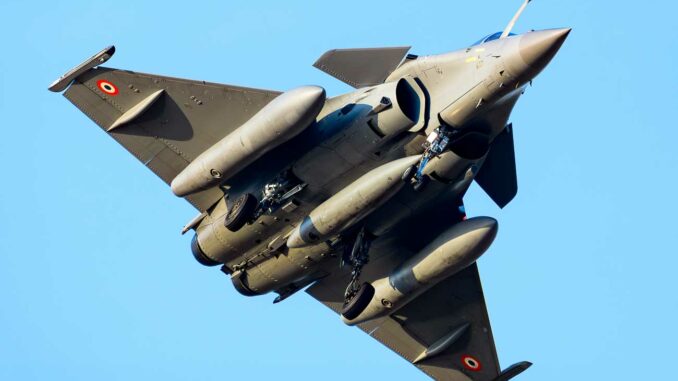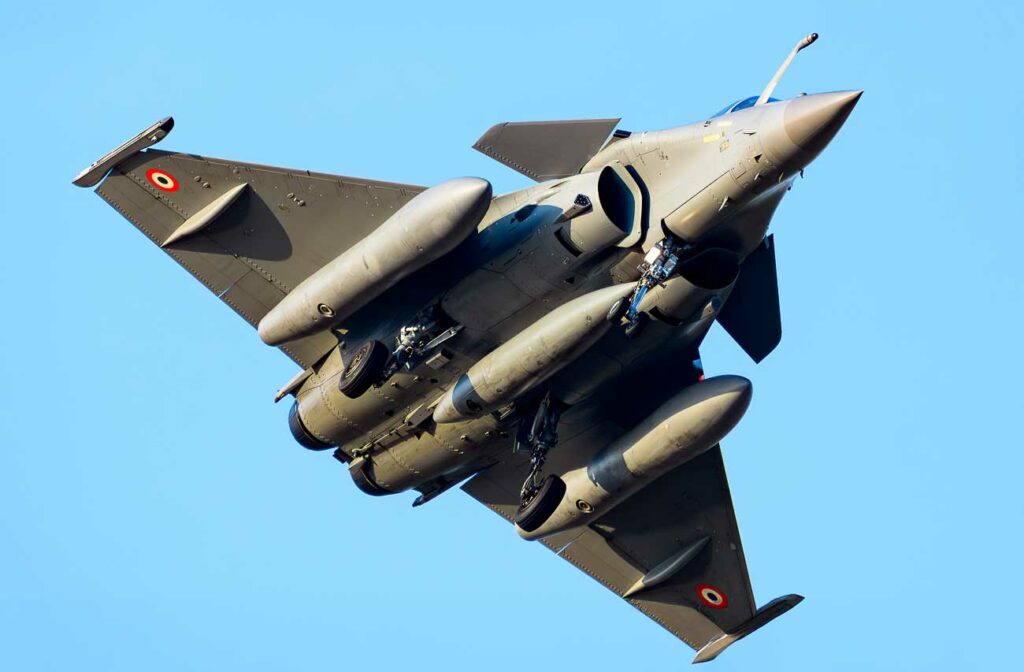
The IAF is considering a G2G agreement for 114 Rafale jets as part of the MRFA, strengthening Dassault, Make-in-India, and modernizing the air force.
The origins of the MRFA program and the preeminence of the Rafale
The Multi-Role Fighter Aircraft (MRFA) program aims to equip the Indian Air Force with 114 4.5-generation fighter jets. Launched to replace aging fleets such as the MiG-21, MiG-29, and Mirages, it follows the failure of the MMRCA competition that began in the 2000s.
In February 2025, sources announced that India could consult manufacturers worldwide, including Lockheed Martin (F-21), Boeing, UAC (Su-57), Saab (Gripen E), Eurofighter, and Dassault (Rafale). However, by August 2025, the IAF appeared to favor an exclusive government-to-government (G2G) contract with France for 114 Rafales, bypassing the traditional tender process.
The crucial step will be the submission of the Acceptance of Necessity (AoN) to the Defense Acquisition Council (DAC) by October 2025, formally triggering the acquisition process.
Implications for Dassault Aviation
For Dassault, an order for 114 Rafale aircraft would represent its largest export contract ever. It would confirm the Rafale’s robustness and India’s confidence in French technology over alternatives.
In April 2025, India already signed a $7.4 billion (≈ INR 6 trillion) contract for 26 Rafale M naval aircraft for its navy. It includes 22 single-seaters and 4 two-seaters, with deliveries until 2030, and training for personnel in France and India.
At the same time, Dassault and Tata Advanced Systems announced in June 2025 the construction of a site in Hyderabad to produce fuselages locally. The site is expected to reach two fuselages per month by 2028, serving India and other markets. This reinforces the “Make in India” model by enabling a transfer of production and supporting the Indian industrial ecosystem.
Production capacity and impact on deliveries to France
The impact of a contract of this size on French domestic deliveries remains to be assessed. While the French supply chain remains essential, the Indian component, via Tata-Dassault, could absorb some of the volume, limiting industrial tensions.
As the Rafale is mainly assembled in France — fuselage in Bordeaux, wings in Martignas, tailplanes in Biarritz, with 60% of the work carried out by Dassault — Indian support will help spread the load and optimize overall production.

Indian operational and industrial context
Status of operational forces (squadrons)
The IAF suffers from reduced capacity: only 31 active squadrons against a target of 42.5, which is insufficient to face threats on two fronts (Pakistan and China). The retirement of the MiG-21s is exacerbating the situation. Recent operations such as Sindoor have demonstrated the use of Rafale aircraft equipped with SCALP and AASM missiles.
Advantages of the Rafale
The Rafale is equipped with the SPECTRA suite, Meteor missiles, SCALP and Exocet missiles, and has clear superiority in various combat scenarios, particularly at high altitude and at sea.
A fleet shared with the navy (Rafale M) would simplify logistics, maintenance and pilot training, which is a significant advantage.
Dispute over source code
One of the major obstacles remains access to the Rafale’s source code, which is essential for integrating indigenous weapons (Astra, Rudram, SAAW), making mission command autonomous, and preserving technological independence. Without this, India would still depend on French approval for any modifications or upgrades.
Budgetary context and strategic dynamics
Financing and scheduling
The Rafale M order demonstrates a significant budget allocation for modernization. The jobs created combine French and Indian efforts.
The forthcoming AoN would activate official financing for the rest of the program.
Regional environment
This project comes at a time of accelerating regional air capabilities: China is supporting Pakistan with J-35s, while India is seeking to strengthen its air and naval security.
The Rafale, combined with Meteor missiles, gives India a clear advantage in long-range confrontations.
Access to the source code could also position India to become a regional maintenance, repair, and operations (MRO) center for other Rafale users.
Industrial and strategic issues
- Strengthening national sovereignty: local production, control of technology, protection of future choices.
- Solidifying the partnership with France: through contracts, technology transfers, and defense cooperation (e.g., the Garuda exercise, active since 2003).
- Urgent modernization of the IAF, now at its lowest squadron level but boosted by the imminent acquisition of 114 aircraft.
- Pressure on regional balance: the contract would alter the power dynamics in South Asia.
- Digital challenge: the issue of source code remains a potential sticking point, which could slow down the acquisition or push India towards alternatives (Su-57E, F-35, AMCA).
War Wings Daily is an independant magazine.